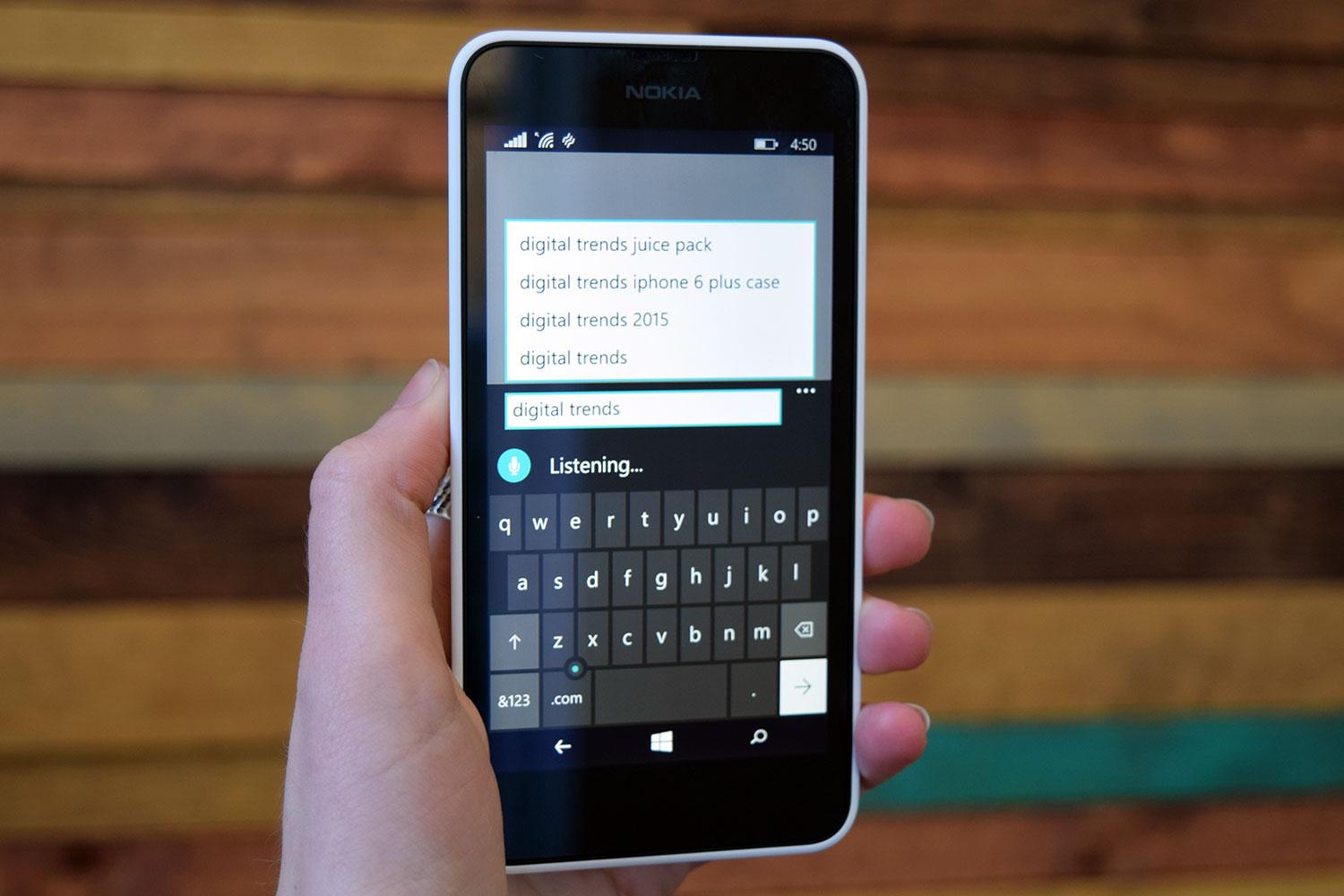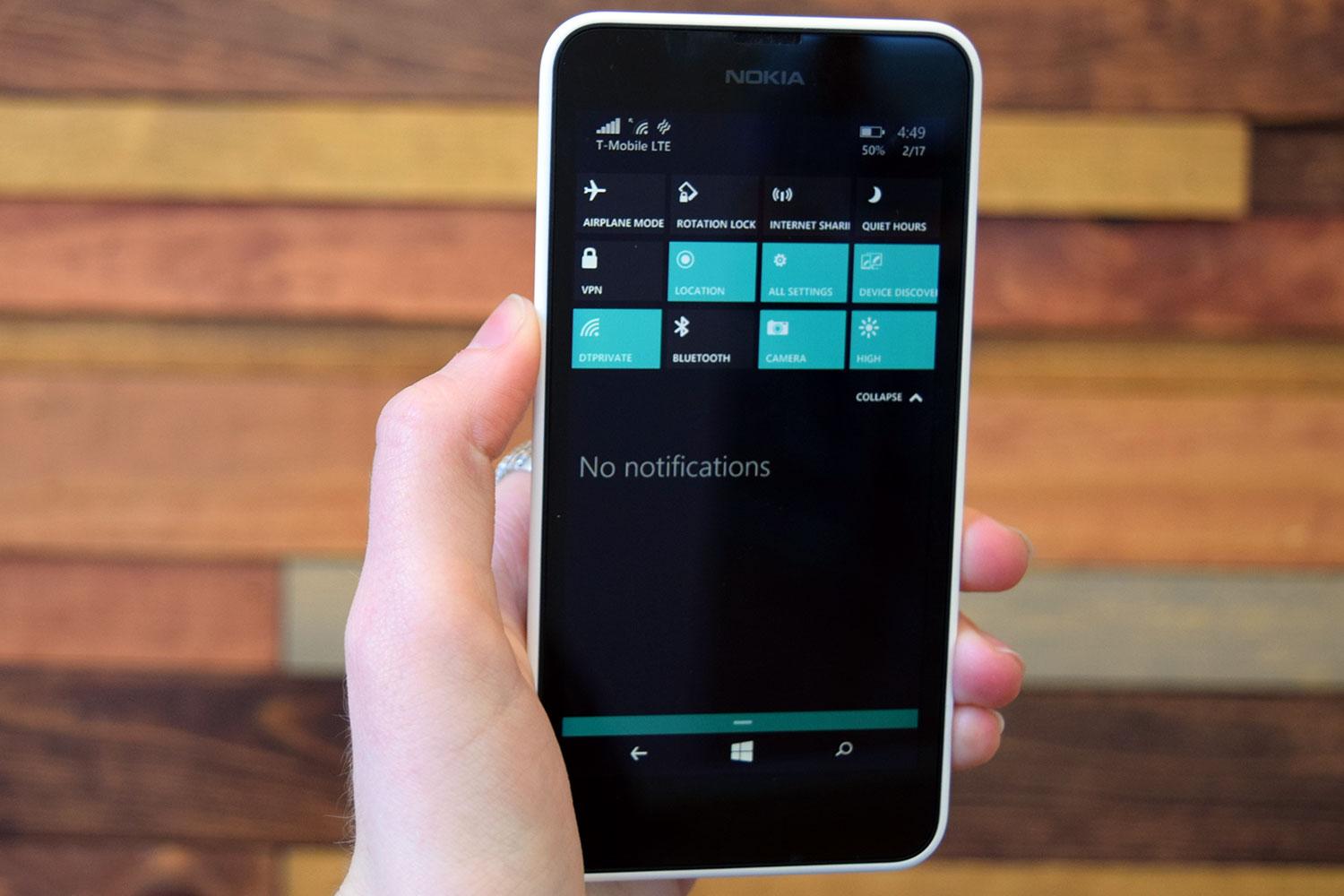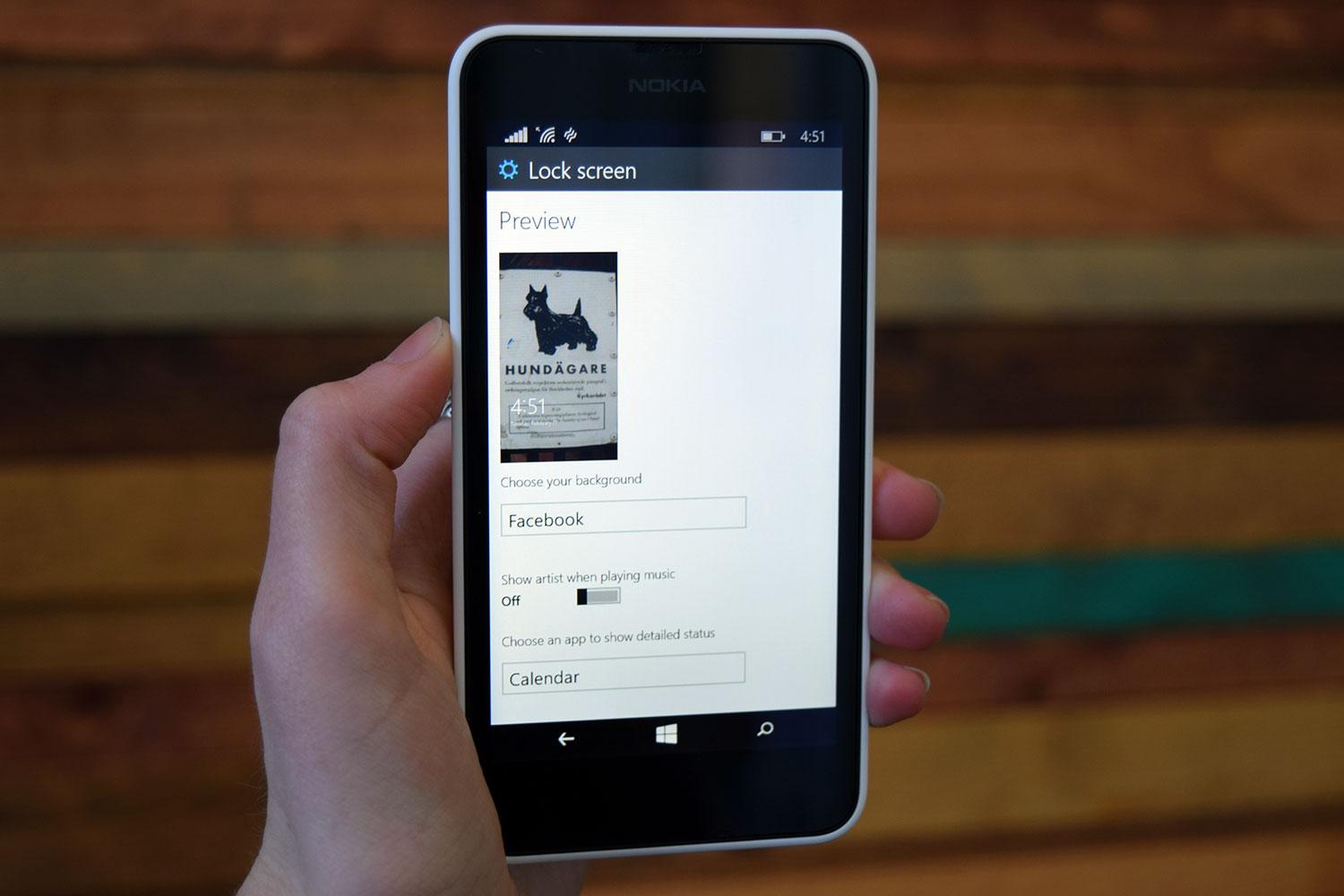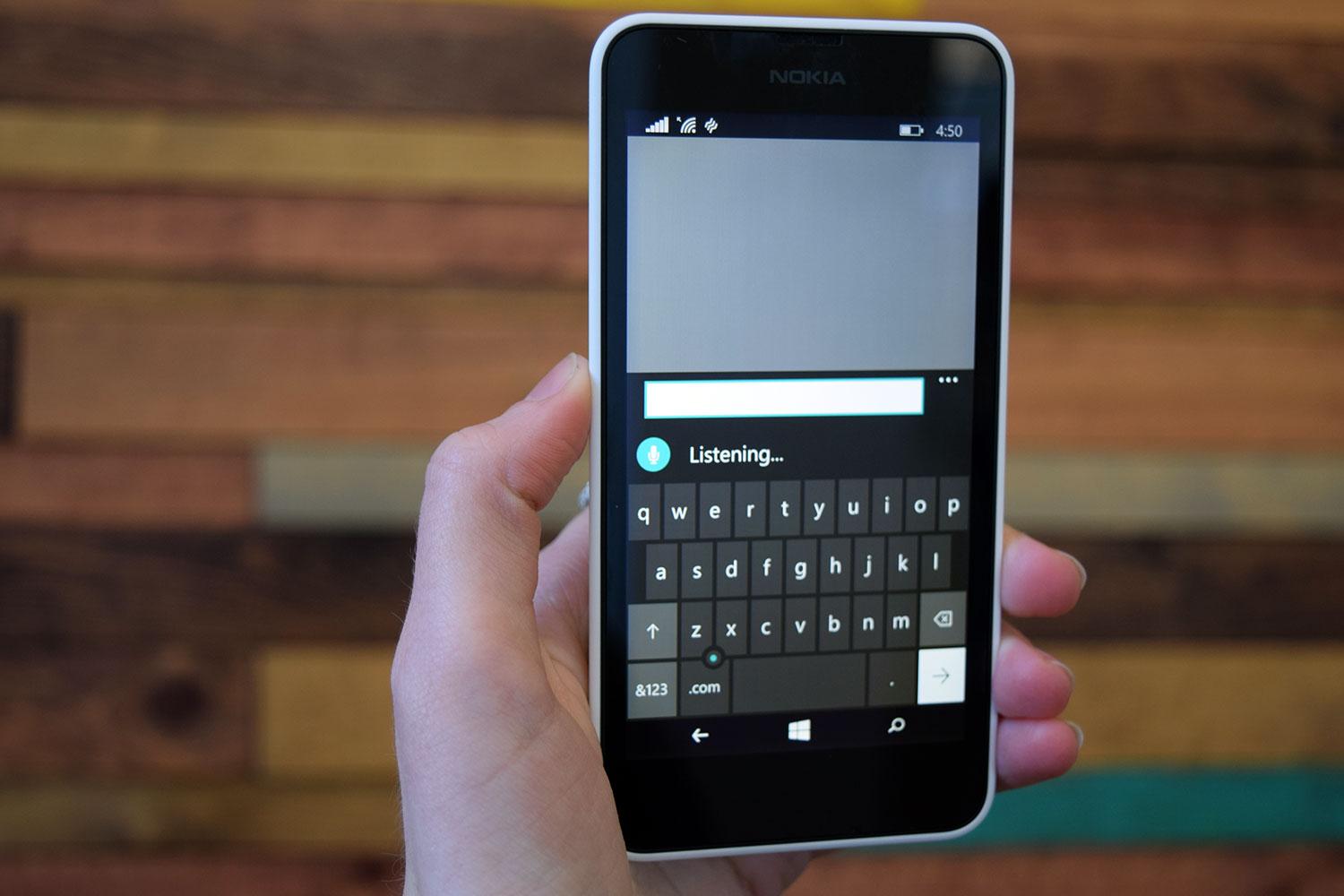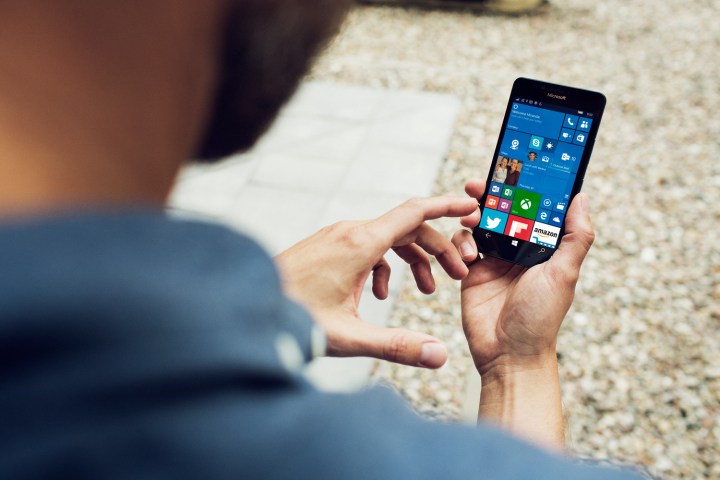
It has been a long time coming — more than a year — since Microsoft announced Windows 10 for mobile devices, but the update is finally seeing the light of day. The update, which offers features like Continuum and Windows Hello, is officially rolling out to select Windows Phone 8.1 devices. Here’s everything you need to know.
Here are all the Lumias that get Windows 10 Mobile

As expected, Microsoft’s list of upgrade eligible devices is pretty short for now. Many of the older Lumia phones with less than 1GB of RAM are not included in the list. Of course, Microsoft will continue to roll the update out to other devices, so yours may one day be included.
You can download the Windows 10 Upgrade Advisor app from the Windows Store to check if your phone gets Windows 10 Mobile. The list doesn’t include some devices that were able to run Windows 10 Mobile in the Windows 10 Mobile Insider program.
Here is a full list of currently supported devices:
- Lumia 430
- Lumia 435
- Lumia 532
- Lumia 535
- Lumia 540
- Lumia 635 (1 GB RAM)
- Lumia 640
- Lumia 640 XL
- Lumia 735
- Lumia 830
- Lumia 930
It’s bad luck if your phone isn’t compatible, but Microsoft had this to say on the matter:
“As Windows 10 delivers significant new innovations, many older devices are not able to successfully upgrade without an impact on the customer experience,” said Michael Fortin, CVP of Windows and Devices Group Core Quality, in a blog post. “Our goal is to only offer the Windows 10 upgrade to devices that we are confident can continue to deliver a good customer experience.”
Additionally, it’s key to note that software updates are often dependent on which carrier you have, so the rollout might be staggered.
More apps with Windows 10 and Continuum
With Windows 10, you’ll likely be seeing more apps being added to the app store, because developers simply have to build one app for Windows 10 desktop for it work on smartphones and tablets, too. For example, Twitter just updated its app to support the latest version of the Windows 10 Mobile operating system. Many tech pundits view Twitter’s move as a positive sign for Windows phone users, who have often had limited app choices in the past.
Launching today! Twitter for #Windows10 is now available on mobile: https://t.co/bXoPhzwh6S pic.twitter.com/tGRm3yheXa
— Twitter (@twitter) March 16, 2016
Windows 10 Mobile holds more than just more apps, though. Continuum is one of its biggest features, though it only works on select phones. Continuum essentially allows you to plug your phone into a monitor or dock and you’ll find the phone’s operating system adapting to the larger screen size. You’re getting a normal Windows 10 desktop experience, powered by your phone. Microsoft also launched a new Windows Store that has a new look, and lets people buy apps, games, music, movies, and TV shows.
We’ll keep an eye on how the roll out fares and we’ll update this post with any new information.
A refreshed design
Previously, Microsoft only gave us the briefest of sneak peeks of Windows 10 on mobile devices at its launch, but we learned a great deal through the Technical Preview. Among the new features are an audio recording app, new context menus, keyboards that you can center to the right or left side of your screen, an updated alarm app, and a fuller notification menu.
Most of the changes are slight, but they should help make the overall Windows experience smoother on smartphones. The keyboard positioning feature in particular will come in handy with the larger Lumia phablets. There’s also a new notification center, quick action settings, and other key design improvements in core apps. Voice controls are also much improved and you can now ask Cortana to search for things for you.
Windows 10 features a brand new, universal Photos app, so it runs across the phone and the PC in the same way. Images will be formatted to appear correctly on all devices. It’ll work using OneDrive, and photos uploaded from your phone will sync locally on other Windows 10 hardware. Cleverly, the Photos app will aggregate all pictures and remove duplicates or multiple images from burst mode shots, for a simple, single view.
An Auto Enhancement mode will be activated by default, offering features including red eye removal and brightness adjustment. Manual settings will let you adjust all these settings. An Albums feature automatically makes collections from your pictures, and the same feature will eventually organize your music.
Previous updates:
Updated on 3-17-2016 by Julian Chokkattu: Added news of Windows 10 officially launching for existing smartphones.
Updated on 3-7-2016 by Christian de Looper: Added rumor that Microsoft will be targeting a March 2016 rollout rather than a February 2016 rollout for Windows 10 Mobile.
Updated on 1-22-2016 by Malarie Gokey: Added rumor that Microsoft will rollout Windows 10 Mobile in February. Also added news that the monthly update to the Lumia 950 and 950 XL has been delayed for this month.
Updated on 1-13-2016 by Malarie Gokey: Added news that some T-Mobile Poland users are getting the Windows 10 Mobile update on older Windows Phones.
Updated on 12-17-2015 by Williams Pelegrin: Microsoft updated its availability statement to say that the Windows 10 Mobile update for Windows Phone 8 and 8.1 has been pushed to early 2016.
Updated on 10-13-2015 by Malarie Gokey: Added news that Microsoft will decide which phones get the update and when it arrives.
Updated on 10-07-2015 by Malarie Gokey: Added news that older Lumia phones will be upgraded to Windows 10 in December.
Updated on 08-05-2015 by Andy Boxall: Added news of which Lumia phones will be first to get upgraded to Windows 10.
Updated on 5-15-2015 by Malarie Gokey: Added list of new features in latest Technical Preview build 10080.
Updated on 4-17-2015 by Malarie Gokey: Added news that Office apps may reach the Technical Preview before April ends.
Updated on 4-15-2015 by Malarie Gokey: Added new features from latest Technical Preview update and refreshed information in the post that was out of date.
Updated on 2-12-2015 by Malarie Gokey: Added news that Microsoft’s Windows 10 Technical Preview is now available to Windows Insiders.
Updated on 02-10-2015 by Malarie Gokey: Added news that Microsoft will hold a press event at Mobile World Congress on March 2, where it may reveal new phones and more Windows 10 news.
Updated on 02-09-2015 by Malarie Gokey: Added news that only some features from Windows 10 may be supported on select 512MB RAM phones.
Updated on 02-06-2015 by Malarie Gokey: Added news that Windows 10 may support some 512MB RAM phones and added leaked screenshots of new features.
Editors' Recommendations
- Windows 11 might nag you about AI requirements soon
- Windows 11 tips and tricks: 8 hidden settings you need to try
- Everything you need to know about buying a GPU in 2024
- When is my phone getting Android 14? Here’s everything we know
- What is YouTube Music? Everything you need to know
